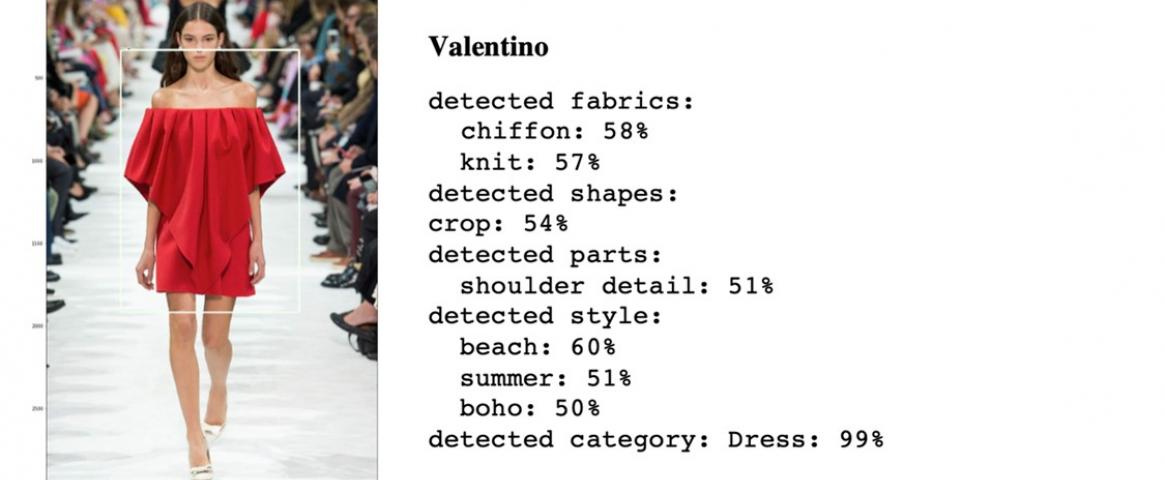By Niba Audrey Nirmal
Historically, the fashion industry has operated by reacting to meet consumer demands. Now, technology is enabling the industry to predict those demands through artificial intelligence.
In collaboration with Hearst Communications, Cornell University Ph.D. researcher Mengyun (David) Shi created an AI algorithm that can be used to forecast fashion trends for the industry by identifying clothing attributes such as patterns and styles.
Research suggests that AI can give designers a competitive advantage, but could also mitigate overproduction, a serious problem stigmatizing the industry. According to research published in Rutgers Business Review in 2019, 15% of fabrics are abandoned at the cutting stage, and over $600 million of unsold merchandise is burned each year. As companies begin to use AI, these enormous amounts of waste could be reduced through optimized production.
Companies such as Stitch Fix already use AI to personalize shopper recommendations, but Shi’s algorithm goes beyond individual users and has the potential to impact fashion at the industry level. By categorizing and predicting fashion trends, algorithms like Shi’s enable designers to understand customer tastes to reduce inventory waste or even anticipate industry needs.

Shi is a designer-turned-data-scientist who recognized the role AI could play in fashion. Shi began designing clothes in China over a decade ago. Later, he moved to Milan to learn from top brands including Dolce & Gabbana, Giorgio Armani, and la Rinascente.
About his time in Milan, Shi said, “I wanted to learn the best design, but then I realized there’s no innovation there. Luxury companies are not interested in technology. They have their own way of making things.”
That’s when Shi realized how important AI could be in collecting and interpreting data for the fashion industry, so he decided to pursue computer science at Cornell and left Milan.
Shi’s algorithm, or model, is designed to track a different kind of model — runway models. The algorithm analyzes runway show videos frame by frame. By breaking down the images and distinguishing people and clothing, it detects attributes such as colors, styles, and textures, using another algorithm called Faster-R-CNN.
“You can never use [the] human eye to analyze all the attributes in fashion trends, because fashion moves too fast. There are so many pictures, so many runway shows,” Shi said, explaining that to analyze over a million images, you must use a tool like AI. “If we can know all the attributes of a certain item [of clothing], we can figure out whether you like it or not.”
Shi’s algorithm could be used to identify styles in a single runway show, or even multiple shows, for example all of Paris Fashion week. After quantifying how often each attribute appears, the algorithm can determine trends for individual brands as well as across the entire industry.
But how do you quantify how “dressy” something is? Can you teach an algorithm what a dress looks like? Or the differences between a pencil skirt and a miniskirt?
Turns out, yes.

The algorithm is a neural net, “trained” to learn fashion concepts from a virtual closet database of clothes with clearly labeled attributes such as “crop” or “floral.” Shi trained his AI model using a subset of the Deepfashion database, a large-scale fashion dataset with hundreds of thousands of images from online shopping websites and street photos. By understanding the patterns in the data, the algorithm learns the characteristics of fashion attributes.
Shi says that figuring out which clothing attributes drive more clicks and sales will help companies to identify which product features sell more clothes, which would enable them to eliminate less popular items. “Then the company can better understand what to design, what to sell, [and] what to market,” Shi said.
While the technology is still in its nascent stages, Shi says AI abilities are expected to grow significantly as datasets continue to grow in both size and accuracy. Shi believes AI could ultimately play a significant role in making the fashion industry more sustainable through reducing waste.
Niba Nirmal is a multimedia science communicator based out of San Francisco. She studied plant genetics at UC Davis (BS, 2013) and Duke University (MS, 2020). Her self-created science communication brand, @NotesByNiba, explores the science in cosmetics, fashion, and skincare. You can see her work at www.notesbyniba.com and follow her on Twitter, Instagram, and YouTube.
This story was produced as part of NASW's David Perlman Summer Mentoring Program, which was launched in 2020 by our Education Committee. Nirmal was mentored by Jeremy Rumsey.




